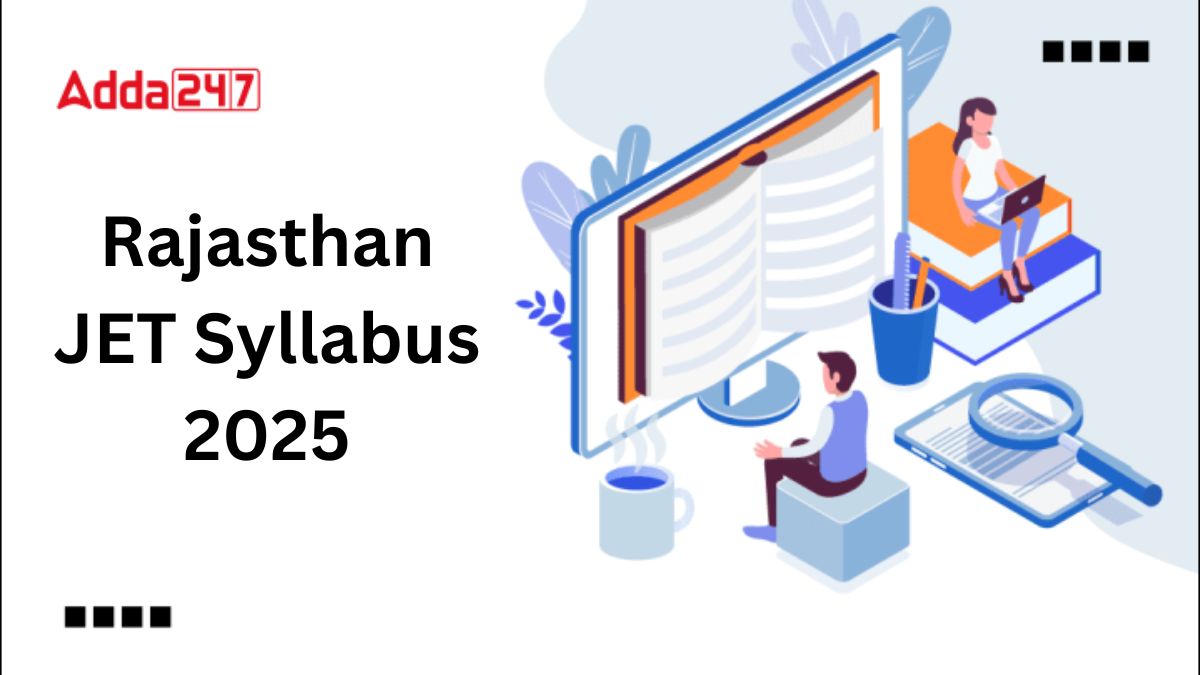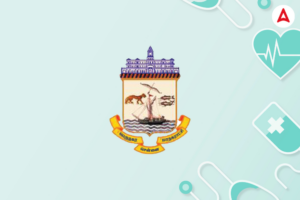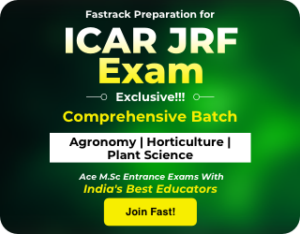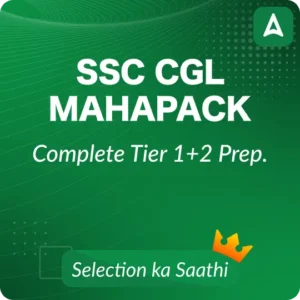For the Rajasthan JET 2025 exam, Agriculture University Jodhpur has given a syllabus that includes Agriculture, Physics, Chemistry, Biology, and Mathematics. The exam will be in June 2025, so you have plenty of time to start studying. It’s important to look at the detailed Rajasthan JET syllabus for each subject now. This will help you understand what to study and make your preparation easier. By starting early, you’ll be able to plan your study time better and feel more confident when the exam comes.
Rajasthan JET Syllabus
Understanding the Rajasthan JET Syllabus is key to preparing well. The syllabus covers Physics, Chemistry, Mathematics, Biology, and Agriculture. Getting to know the details of each subject will help you plan your study approach effectively.
The exam will have 200 questions, with 4 marks for each correct answer and a 1-mark deduction for wrong or unanswered questions. To do well, make sure you study all the topics listed in the Rajasthan JET syllabus thoroughly. Knowing what to expect will make your preparation more focused and efficient.
Rajasthan JET Syllabus 2025: Key Highlights
Check the following table for more details on Rajasthan JET Syllabus 2025:
| Rajasthan JET Syllabus 2025: Key Highlights | |
| Organization | Agriculture University Jodhpur |
| Exam Name | Joint Entrance Test |
| Category | Syllabus |
| Exam Mode | Offline |
| No. of Sections | 5 (Physics, Chemistry, Mathematics, Biology, and Agriculture) |
| Question Paper Type | Objective-type |
| Exam Duration | 2 Hours |
Rajasthan JET Exam Pattern
To prepare well for the Rajasthan JET exam, it’s important to understand the exam pattern. Here’s a table showing how many questions will be asked from each subject. This breakdown will help you plan your study time better and focus on the most important areas. Check out the table below to get a clear idea of the exam structure.
| Name of the Subject | Number of Questions |
|---|---|
| Agriculture | 40 |
| Chemistry | 40 |
| Biology | 40 |
| Mathematics | 40 |
| Physics | 40 |
| Total | 200 |
Rajasthan JET Syllabus 2025
The Rajasthan Joint Entrance Test (JET) 2025 syllabus is important for your preparation. It covers many topics to test your knowledge for entry into different UG and PG agriculture programs. The syllabus includes detailed study materials on Agriculture, Physics, Chemistry, Biology, and Mathematics. Look at the detailed syllabus below to know exactly what you need to study.
Agriculture
Here is the detailed syllabus for the Agriculture section of the Rajasthan JET:
| Unit | Topics |
|---|---|
| Unit-A (15 Questions) | Food production and its importance, history of Indian agriculture, branches, weather and climate, irrigation methods, weed management, arid agriculture, soil properties, nutrient fertilizers, water drainage, agricultural machinery, seed quality, genetics, plant breeding, agricultural economics, crop insurance, marketing of agricultural products, agronomy, crop production (cereal, pulses, oilseed, fodder, cash crops, fiber crops), organic farming. |
| Unit-B (15 Questions) | Fruit and vegetable crops, orchard management, plant growth regulators, study of specific fruit and vegetable crops, ornamental gardening, flower cultivation, spices, medicinal plants, mushroom production, beekeeping, post-harvest management, food processing, packaging, and preservation. |
| Unit-C (10 Questions) | Importance of livestock, animal breeding, reproductive management, animal nutrition and feed preservation, animal health and disease treatment, poultry management, characteristics of animal breeds (cow, buffalo, sheep, camel), dairy science, bio-waste management, and government schemes for livestock development. |
Physics
Here is the detailed syllabus for the Physics section of the Rajasthan JET:
| Unit | Topics |
|---|---|
| Unit-A | Basics of Physics and Mechanics |
| Physical world: Scope, nature of physical laws, technology, and society. | |
| Units and Measurements: SI units, measurement tools, accuracy, precision, and errors. | |
| Kinematics: Motion in a straight line, uniform and non-uniform motion, velocity, acceleration, and projectile motion. | |
| Dynamics: Laws of motion, friction, equilibrium, and circular motion. | |
| Work, Energy, and Power: Work done by forces, kinetic and potential energy, power, and conservation laws. | |
| Rotational Motion: Moment of inertia, torque, angular momentum, and comparison with linear motion. | |
| Unit-B | Gravitation, Properties of Bulk Matter, and Thermodynamics |
| Gravitation: Kepler’s laws, universal gravitation, gravitational fields, and potential energy. | |
| Mechanical Properties of Solids: Elastic behavior, stress-strain relationships, and Young’s modulus. | |
| Mechanical Properties of Fluids: Pressure, viscosity, Bernoulli’s theorem, and surface tension. | |
| Thermal Properties: Heat, temperature, thermal expansion, specific heat, and heat transfer. | |
| Thermodynamics: Laws of thermodynamics, heat engines, and refrigeration. | |
| Kinetic Theory of Gases: Pressure, temperature, and molecular motion. | |
| Unit-C | Electrostatics and Current Electricity |
| Electrostatics: Electric charges, Coulomb’s law, electric field, Gauss’s law, and capacitance. | |
| Current Electricity: Ohm’s law, resistors, internal resistance, and electrical circuits. | |
| Electronics: Semiconductors, diodes, transistors, and logic gates. | |
| Communication Systems: Elements of communication and demodulation. | |
| Unit-D | Magnetism, Electromagnetic Induction, and Modern Physics |
| Magnetism: Magnetic fields, forces, and properties of magnetic materials. | |
| Electromagnetic Induction: Faraday’s laws, Lenz’s Law, and self/mutual induction. | |
| Alternating Currents: AC fundamentals, phasor diagrams, and resonance. | |
| Electromagnetic Waves: Characteristics and spectrum. | |
| Dual Nature of Matter and Radiation: Photoelectric effect, matter waves, and de Broglie hypothesis. | |
| Atomic and Nuclear Physics: Atomic models, nuclear reactions, and radioactivity. |
Chemistry
Here is the detailed syllabus for the Chemistry section of the Rajasthan JET:
| Unit | Topic | Details |
|---|---|---|
| Unit-A | Basic Concepts and Structure of Matter | Importance and scope of chemistry, measurements, chemical laws, atomic theory, Avogadro’s hypothesis, mole concept, atomic/molecular weight, stoichiometry, atomic structure (Bohr’s model, dual nature of matter, quantum mechanics), periodic table, chemical bonding (ionic, covalent, hybridization), redox reactions, and equilibrium. |
| Unit-B | Chemical Kinetics and Thermodynamics | Rate of reactions, order of reactions, factors affecting reaction rates, activation energy, catalysis, effect of light, basic thermodynamics concepts, exothermic and endothermic reactions, adsorption, acids and bases (Bronsted-Lowry, Lewis, pH, buffer solutions), colloidal state, and metal properties. |
| Unit-C | Agricultural Chemistry | Soil properties and formation, soil organic matter, soil microorganisms, soil colloids, ion exchange, soil reaction (pH), acidic and saline soils, essential plant nutrients, fertilizers (types and effects), agrochemicals, environmental pollution, biochemistry of preservatives and edible colors. |
| Unit-D | Organic Chemistry | Principles of organic chemistry, electronic displacements, covalent bonding, hybridization, nomenclature and properties of hydrocarbons (alkanes, alkenes, alkynes), functional groups (alkyl halides, alcohols, aldehydes, ketones, carboxylic acids), polymers, and applications in dyes and medicines. |
Biology
Here is the detailed syllabus for the Biology section of the Rajasthan JET:
| Section | Unit | Topic | Details |
|---|---|---|---|
| Section-I: Botany | Unit-A | Taxonomy and Classification of Plants | Genus, species, binomial nomenclature, plant classification, salient features of major plant groups (Algae, Bryophyta, Pteridophyta, Gymnospermae, Angiospermae), classification up to class, characteristics of Angiosperms, plant morphology, anatomy, reproduction, cell structure, and genetics. |
| Plant Physiology | Transport in plants, ascent of sap, mineral nutrition, enzymes, respiration, photosynthesis, growth. | ||
| Unit-B | Ecology and Environment | Definition of ecology, environmental factors, plant communities, ecosystem concepts, environmental issues, biodiversity conservation. | |
| Unit-C | Economic Botany and Human Welfare | Domestication of plants, economic importance, uses of various crops (cereals, pulses, fibers, oil seeds, cash crops, fruits, medicinal plants, spices), bio-fertilizers, and pesticides. | |
| Unit-D | Biotechnology and Its Applications | Definition, history, scope, genetic engineering, applications in health and agriculture, plant tissue culture, gene transfer methods. | |
| Unit-E | Major Diseases of Crops and Their Control | Classification of diseases, diseases in Kharif and Rabi crops, fruit crop diseases, and disease management methods (chemical, biological, mechanical). | |
| Section-II: Zoology | Unit-A | Animal Kingdom | Salient features and classification of non-chordates up to phyla level and chordates up to class level, taxonomy, body organization, and animal tissues. |
| External and Internal Morphology | Morphology and structure of Amoeba, earthworms, and cockroaches. | ||
| Unit-B | Invertebrates | Economic importance of invertebrates, insect pests, honey bee and beekeeping, methods of insect control (physical, mechanical, cultural, chemical, bio-control, integrated pest management). | |
| Unit-C | Vertebrates | Nutrition, respiration, circulation, reproductive systems, asexual and sexual reproduction, and fertilization mechanisms. |
Mathematics
Here is the detailed syllabus for the Maths section of the Rajasthan JET:
| Unit | Topic | Details |
|---|---|---|
| Unit-A | Sets and Functions | Definitions and types of sets, operations on sets, relations and functions, function types, graphical representations, domain and range of functions, and types of relations. |
| Unit-B | Algebra | Mathematical induction, complex numbers, quadratic equations, linear inequalities, permutations, combinations, binomial theorem, sequences, series, and matrices. |
| Unit-C | Coordinate Geometry | Equations and properties of straight lines, conic sections (circle, ellipse, parabola, hyperbola), and basics of three-dimensional geometry. |
| Unit-D | Vectors and Three-Dimensional Geometry | Types of vectors, operations on vectors, scalar and vector products, equations of lines and planes, and distances in three-dimensional space. |
| Unit-E | Calculus | Limits and derivatives, continuity, differentiability, applications of derivatives, integrals, and differential equations. |
| Unit-F | Mathematical Reasoning | Logical statements, linear programming, constraints, objective functions, graphical methods for LP problems, and feasible solutions. |
| Unit-G | Statistics and Probability | Measures of dispersion, probability theory, random variables, probability distributions, Bayes’ theorem, and binomial distribution. |
| Unit-H | Trigonometric Functions | Definition and properties of trigonometric functions, trigonometric identities, inverse trigonometric functions, and their graphs. |



 Chennai Corporation Recruitment 2026 Not...
Chennai Corporation Recruitment 2026 Not...
 Kolkata Police SI Admit Card 2025 Out @p...
Kolkata Police SI Admit Card 2025 Out @p...
 TNPSC Group 2 Exam Date 2026 Out for Gro...
TNPSC Group 2 Exam Date 2026 Out for Gro...




 Adda247 Job portal has complete information about all Sarkari Jobs and Naukri Alerts, its latest recruitment notifications, from all state and national level jobs and their updates.
Adda247 Job portal has complete information about all Sarkari Jobs and Naukri Alerts, its latest recruitment notifications, from all state and national level jobs and their updates.



